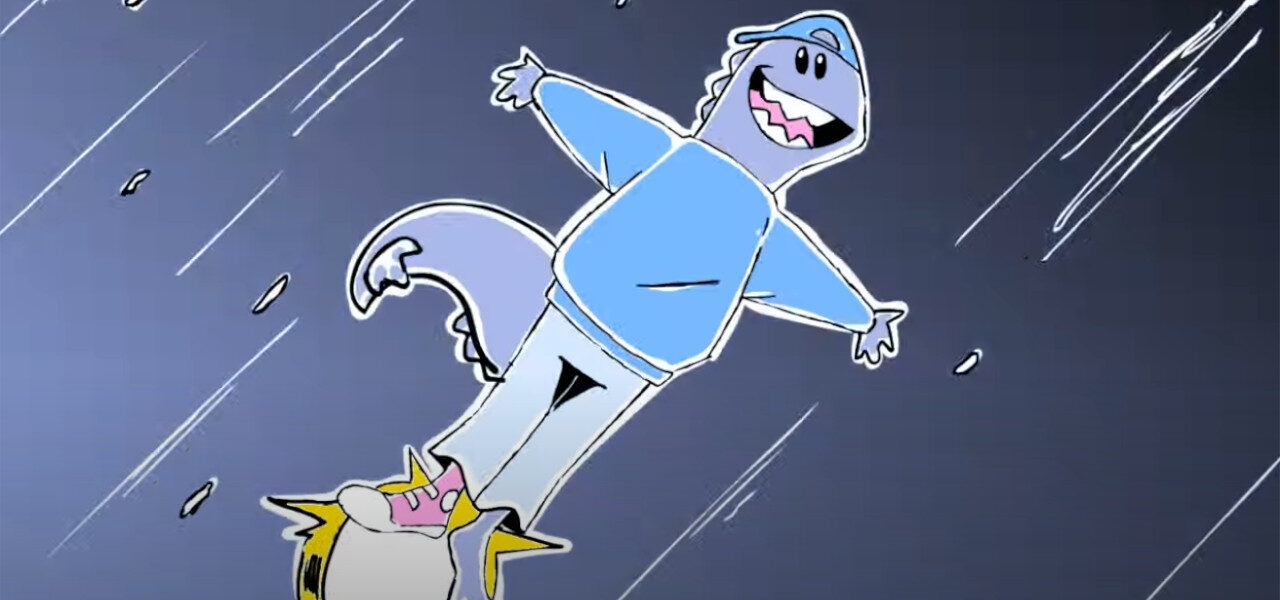
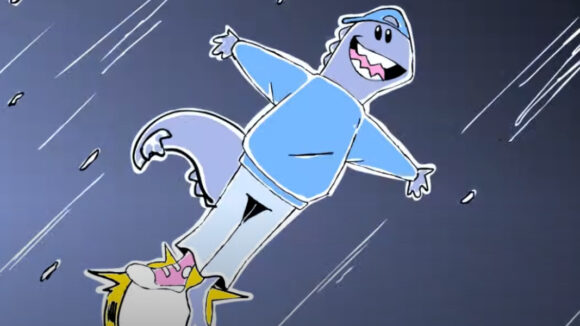
How Titmouse Used Bluescape To Produce Its Work-From-Home Short ‘The Mystery Of Meetings’
Bluescape is a digital platform designed to allow users separated by time and distance to collaborate, iterate, and create all in one visual, persistent space where ideas are captured and preserved.
Emmy-winning animation production company Titmouse recently produced a new comedy short titled The Mystery of Meetings all about working from home, and used Bluespace to facilitate their virtual workplace. We asked some of those involved in production to describe the production process using Bluescape, and compare it to past experiences working remotely as part of a team.
“I got to develop a new style of producing for this project,” says Riley Riggen, associate producer from Emmy-winning animation production company Titmouse. “We had this big space to work in and keep everything organized. We had our video calls in the space. We reviewed segment ideas and boards. We watched videos together. We came up with new ideas. It was really easy to collaborate in Bluescape.”
Riggen recently worked with director Matt Taylor (Rick and Morty: Exquisite Corpse, Fairfax) and a team of artists to explore what’s really going on behind the screens of video meetings. Their new comedic 2d short The Mystery of Meetings travels inside the minds of distracted attendees for a quirky yet critical look at the mysterious worlds beyond the webcam.
The assignment was based on the core mystery of all video meetings: since you’re not in the same room as the people you’re talking to, you never really know what they’re paying attention to or what’s going on around them. This was the creative sandbox given to the Titmouse team.
Each artist had the freedom to express their own style and interpret “the mystery” in their own way—which is why you see influences ranging from Mission Impossible to Rocko’s Modern Life, plus experimental color combinations and techniques.
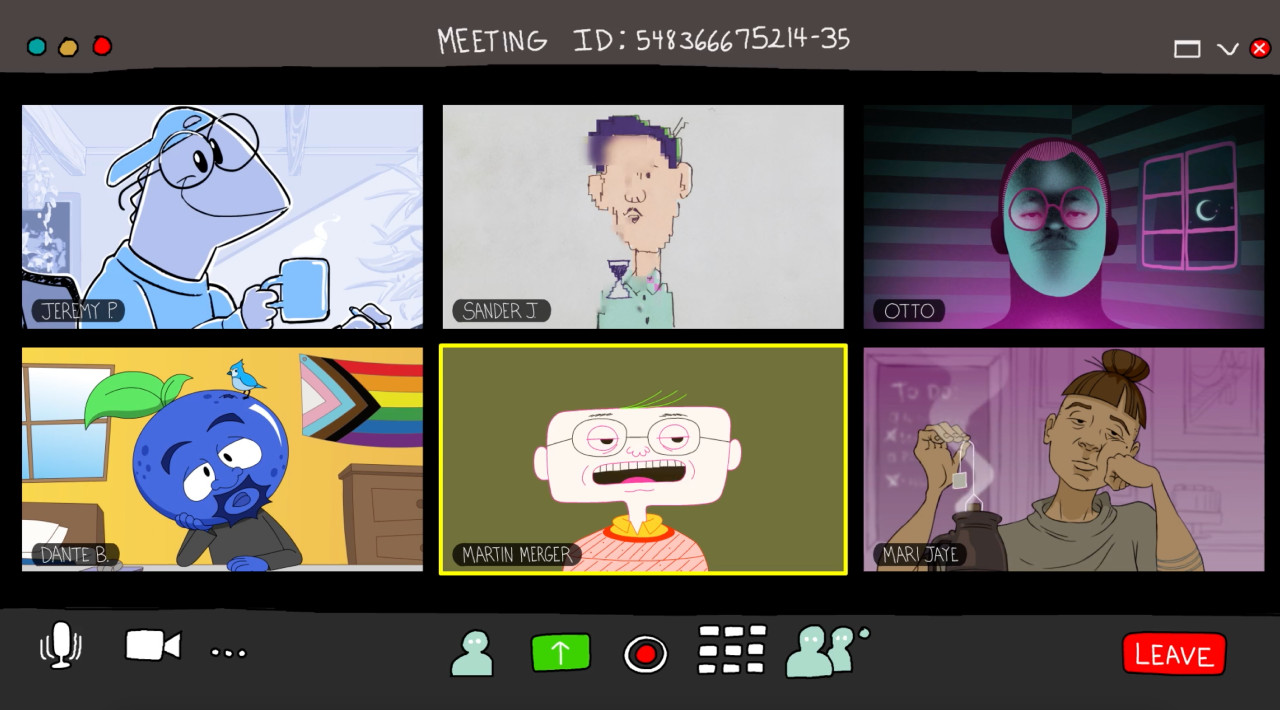
The fully remote team used software platform Bluescape to collaborate while working from California, Oregon, Texas, New York, and Estonia. Afterwards, they shared how jamming together in a Bluescape workspace impacted their creative development.
3 Ways Bluescape Made Production Easier (and More Fun)
Bluescape’s freeform, content-rich workspaces were designed to appeal to organizers and artists alike. The team singled out the aspects of the platform that made each of their roles easier and helped shape the final product.
1. Visualizing the pipeline
“The first thing I did when I got into Bluescape was create a timeline and section it off week by week,” says Riggen. “This served as a visual representation of the production pipeline. Having it in Bluescape made it easier for people to see where we were at and where we needed to go.”
Taylor adds: “Some people use spreadsheets to track projects and highlight things in different colors to show what state various deliverables are in at a given time. It’s sort of a bare-bones way to track stuff. After a while, your eyes get crossed scrolling through a long list of shots.”
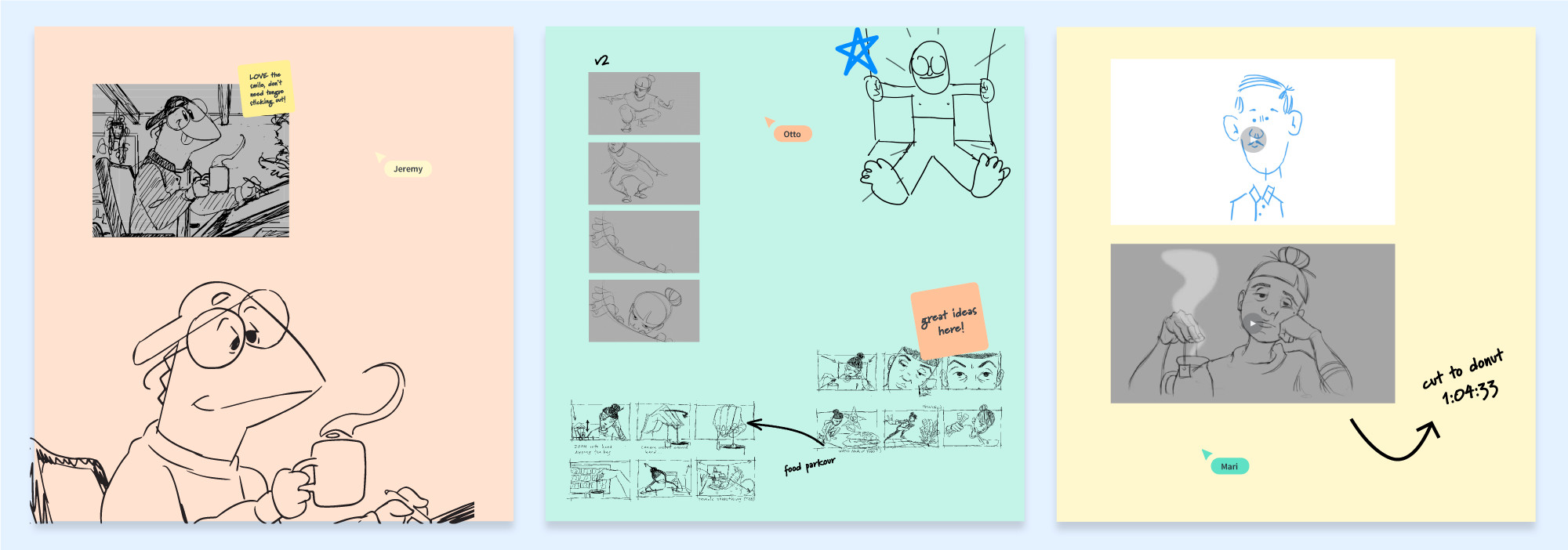
Riggen continues: “Working in production, I occasionally need to be the middleman between the artists and director. Using Bluescape, I was cut out as the middleman, which saved a lot of time. The artists could upload their work right to the workspace for Matt’s review, and I could easily track everyone’s progress.”
“Bluescape was like a giant mind map,” says contributing animator Mari Jaye Blanchard. “We could loop back to early brainstorms, pull out ideas, and build off them. Bluescape lets you rediscover what you were thinking at different phases of the project. You can travel back and say, ‘wow, I was onto something here!’”

2. Getting off your island
Taylor explains how being in Bluescape helped save the ending of the short. “I was about to scrap the ending when I saw Riley was in the workspace. Seeing him there—his RR initials on the screen—was exactly what I needed. We hopped on a call and talked it out. It was a crucial conversation that shaped the entire ending.”
“He showed me his work and I said, ‘Dude, it’s too good! You can’t get rid of this,’” says Riggen. “Having a conversation and reviewing everything in the workspace in real-time was a game-changer. We were able to figure things out so much faster in Bluescape versus regular screen shares.”
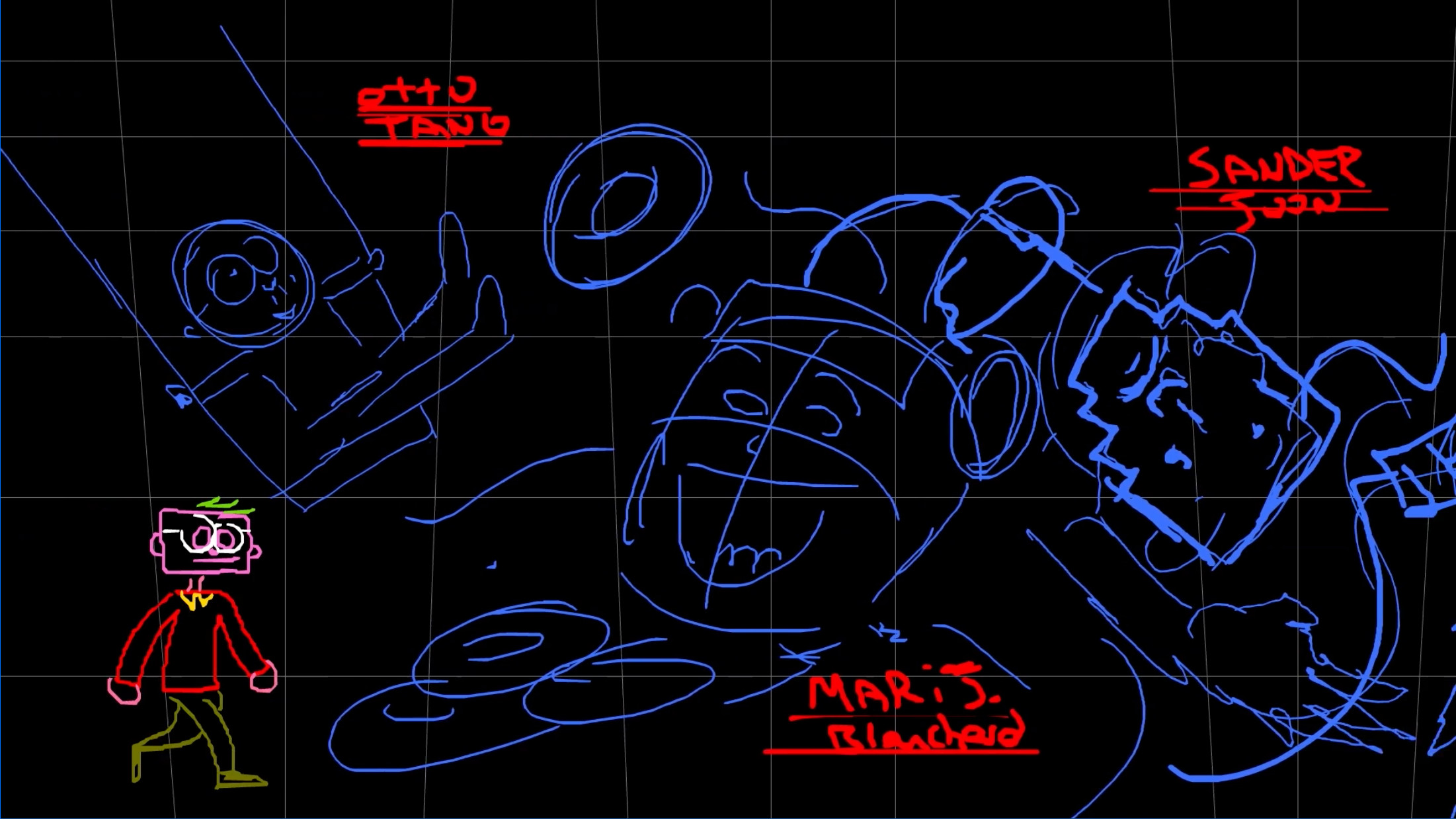
“Interesting things happen in Bluescape,” says Blanchard. “Somebody leaves a note, and someone can respond to it. It opens completely bizarre and amazing conversations. There’s something about being able to draw and expand on each other’s ideas… It’s like our own exquisite corpse happening in the workspace.”
Taylor adds: “Most times when working remote, we’re in divide-and-conquer mode. Each person works on their piece of the project on their own until review time. On this project, it was cool to be in a shared space [virtually] where we could all contribute to an idea and not be on our own islands so much.”
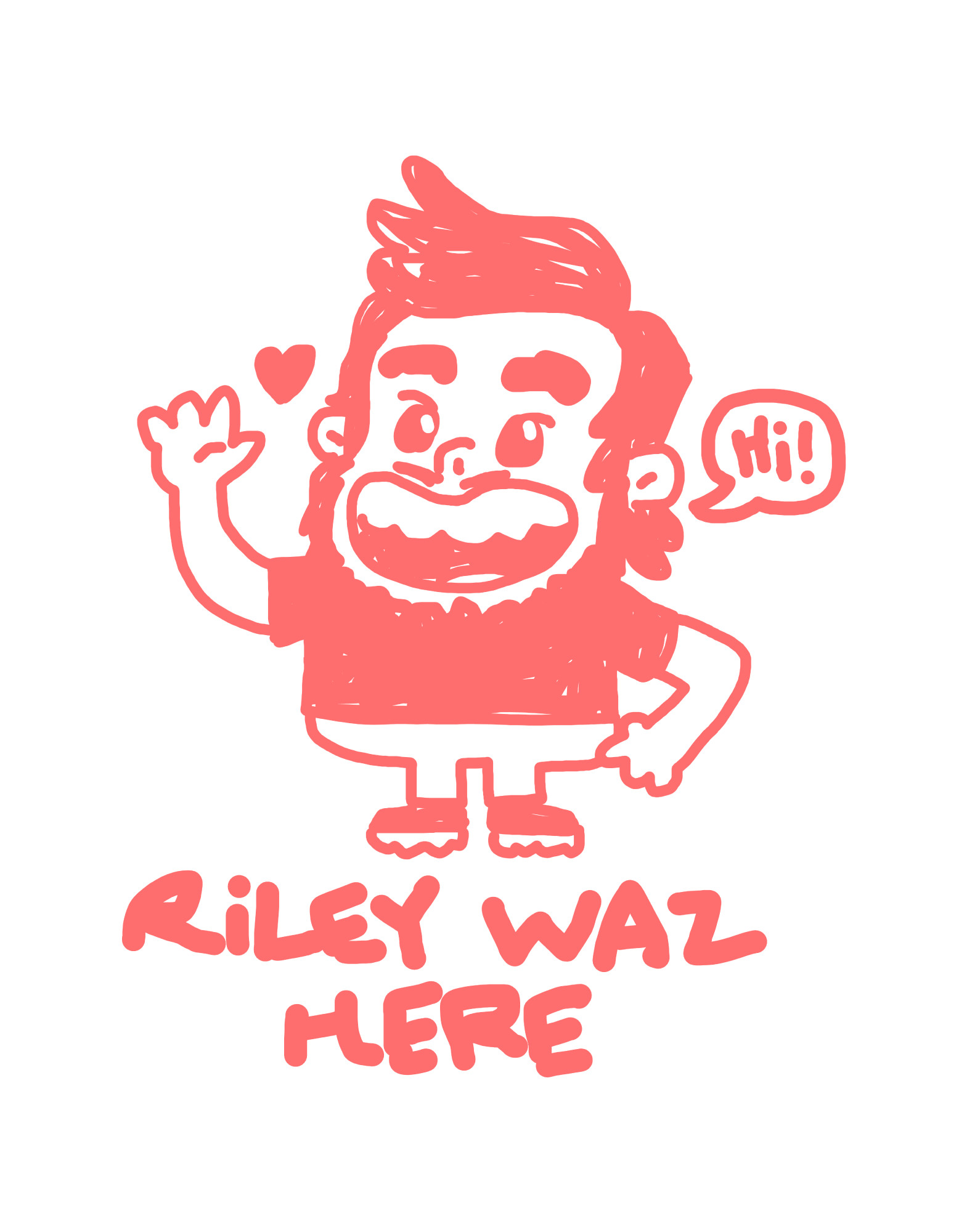
3. Communicating through art
“Bluescape is such a good tool for artists because we communicate visually,” says Blanchard. “People who doodle professionally will definitely love the drawing aspect of Bluescape. It’s fun to joke with each other—and sometimes, something big is solved with a little sketch.”
“When we worked in-studio, we were always throwing up random doodles on the whiteboard or leaving sticky notes on each other’s desks,” adds Riggen. “But when you’re remote and heads-down on a project, it can start to feel tedious. Having some fun and laughing together again was refreshing. We had a lot of fun in Bluescape, and you can see it in the workspace.”
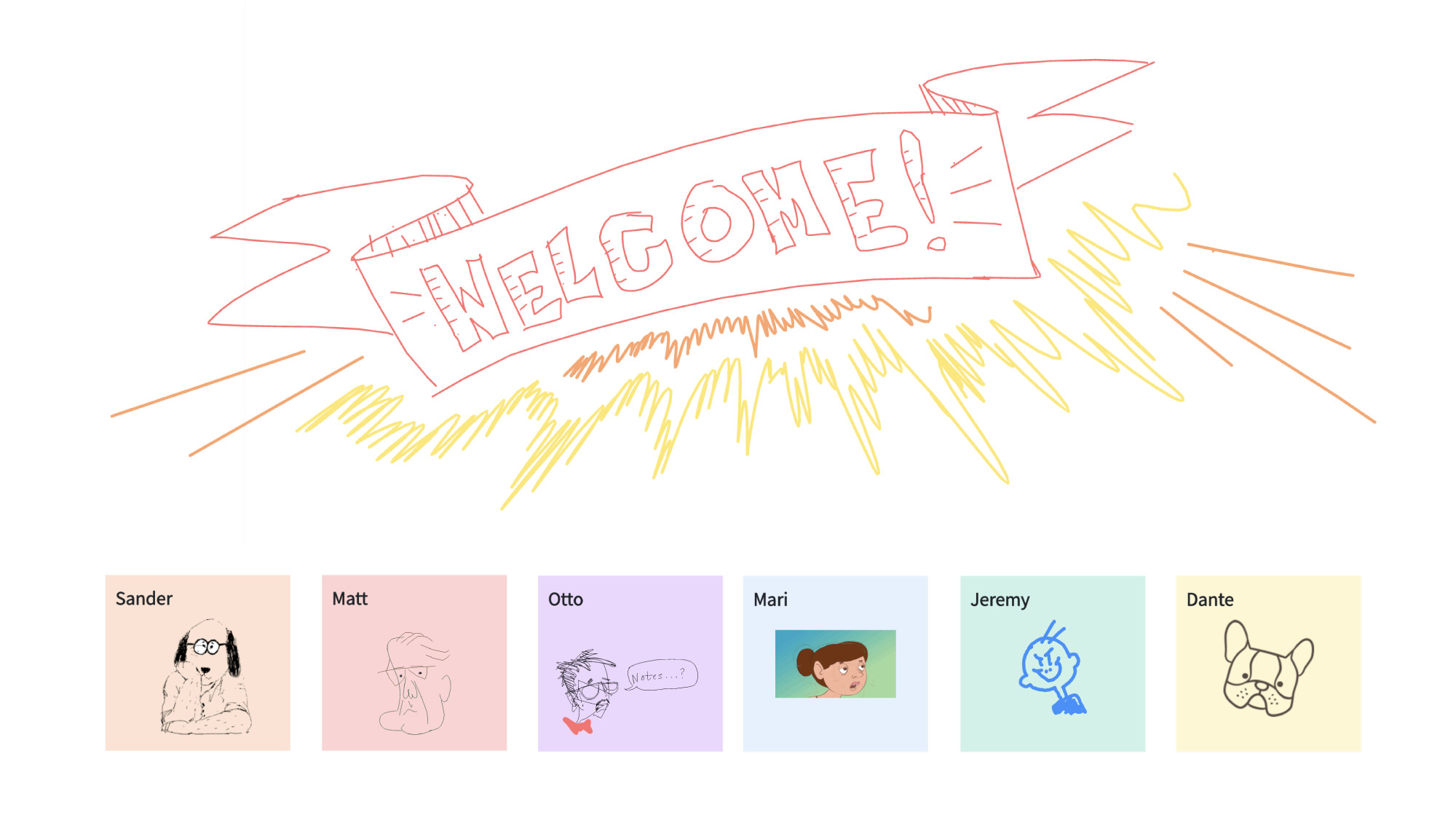
“I knew Matt going into this project, but I hadn’t met the other guys,” explains Blanchard. “When I got into the workspace, everyone was doodling. I made a drawing of Otto [Tang, another animator on the project]. It was immediately collaborative, like sitting around a table at a restaurant drawing on napkins together. We didn’t have to go through the small talk of ‘this is who I am’ and ‘this is what I do.’ We got into the workspace, and it took off from there.”
“You can definitely see the creative ramp up in the workspace,” says Taylor. “The random doodles and ice breaker stuff in the beginning evolved into ideation. Then as everyone was spending more time on their animations and getting closer to the finish line, you see the team cheering each other on.”
Wrapping up
Bluescape gave everyone space to do their part well—whether that was creating structure to keep things on track, drawing in the margins to share feedback, or leaving notes on specific frames to communicate exactly what changes need to be made.
“I’m spoiled by Bluescape,” concludes Taylor. “Other solutions feel archaic now. Things get buried too quickly. I hope to have Bluescape on future projects. A well-organized workspace can serve for an entire pipeline.”
